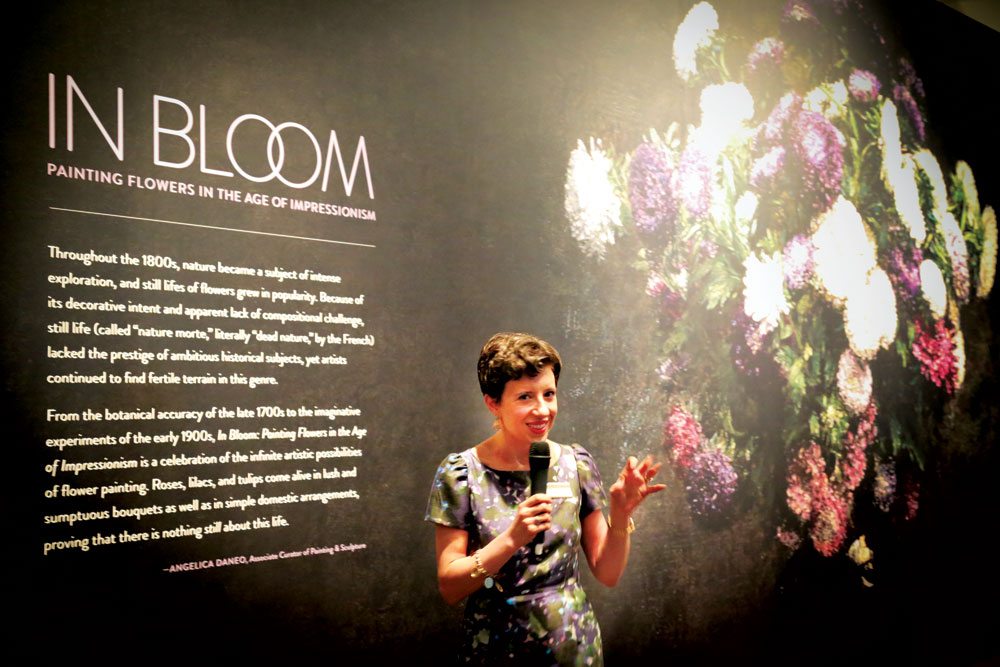
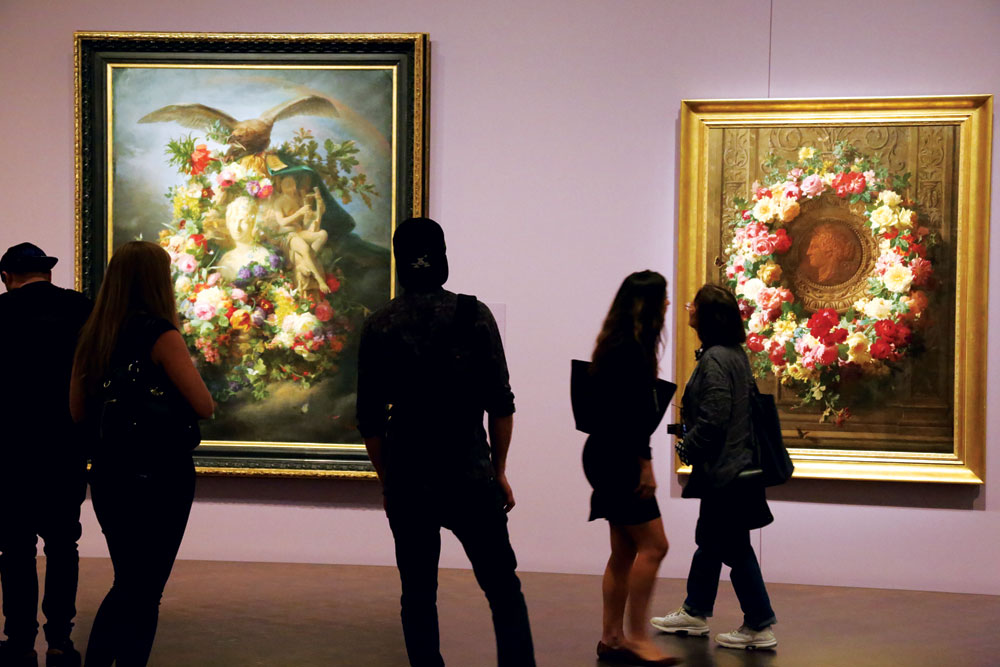
The painting “Homage to Queen Hortense” on the far left by Jean Marie Reigner pays homage to Napoleon III’s mother, and an example of historical references in floral art.
“What I need most of all are flowers, always, always.” Claude Monet
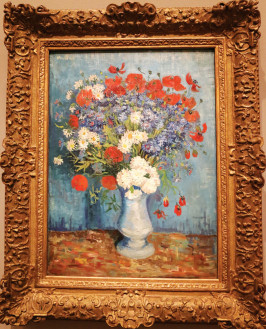
Vase with cornflower and poppies, Vincent van Gogh
In Bloom: Painting Flowers in the Age of Impressionism is a walk through the development of French floral still-life painting through the 19th century. The exuberant exhibition, at the Denver Art Museum through October 11, showcases about 60 paintings by world-renowned French artists Édouard Manet, Edgar Degas, Pierre-Auguste Renoir, Paul Cézanne, Vincent Van Gogh, and others.
“Flowers continue to inspire because of their direct connection to nature,” said Angelica Daneo, associate curator of painting and sculpture at the museum. “In the 19th century, nature was a big subject in poetry, music and art. There was a rise in the production of still lifes and landscapes. Flowers are affordable, immediate, and allow you to experiment with color in a way that other subjects might be too confining.”
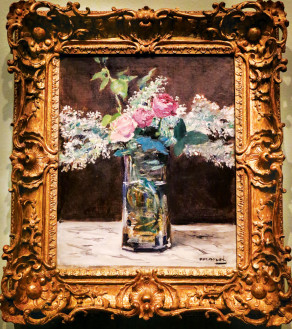
Vase with white lilacs and roses, Edouard Manet
The exhibition demonstrates how a traditional genre was reinvented by 19th-century artists as the art world shifted toward Modernism. The chronological display is a journey from late-1700s paintings to the beginnings of modern art. “We wanted to keep the display galleries open and light, so that as you look at an earlier painting, you might be able to look through to another gallery and compare it with a later work,” said Daneo.
The garden walk begins with late-18th-century works by Pierre-Joseph Redouté and others. “These precursors to Impressionism were accurate in every detail to the botanical description of flowers—the petals and even the bugs,” Daneo said. “It was an analytical approach based on the botanical illustrations of the time.”
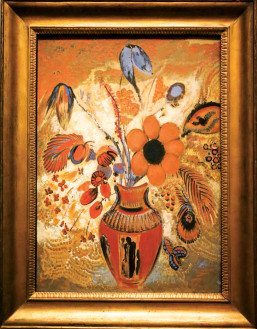
Etruscan vase with flowers, Odilon Redon
Floral art changed in the mid-1800s, favoring color and composition over scientific representation. Floral still life was an elaborate style that included people, statues and other elements as symbolic references. A painting by Jean Marie Reigner honors Napoleon with an eagle holding “7824189,” the number of votes Napoleon got that assured his ascension to emperor. “To our taste, these floral still lifes are way too much. But they were popular at the time,” said Daneo.
In contrast, paintings of a single vase of flowers were masterpieces of composition and structure. “Paintings by Henri Fantin-Latour and his wife, Victoria, were intimate studies,” said Daneo.
Many of the Impressionists were avid gardeners and painted their own blooms. Visitors are invited to stroll through Monet’s garden—a wall-sized mural—while smelling floral vapors in the museum’s first-ever “scent room.” “You experience what Monet might have experienced in his garden,” Daneo said.
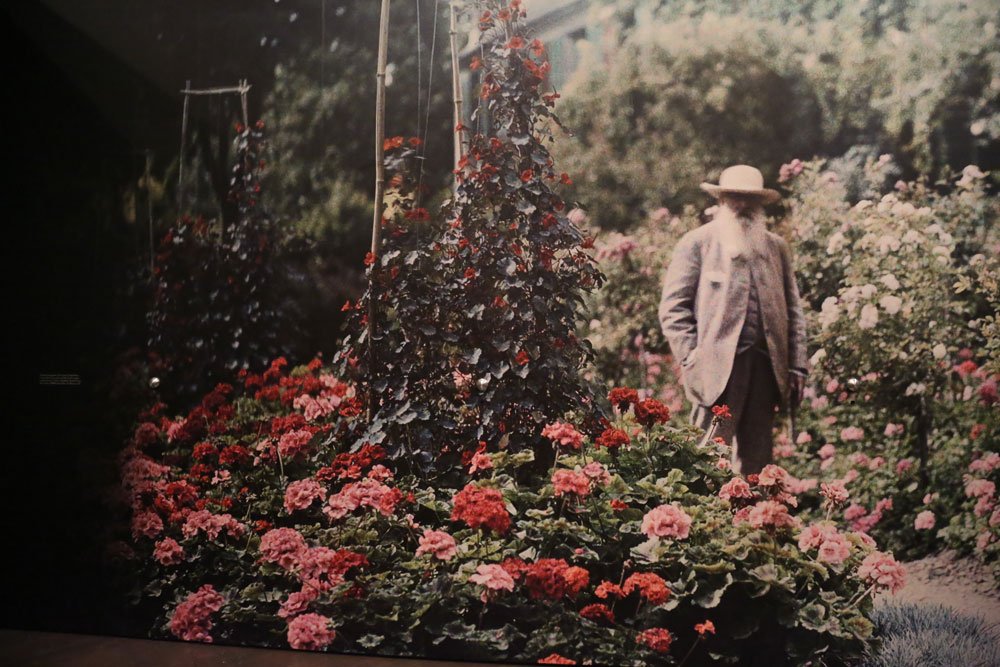
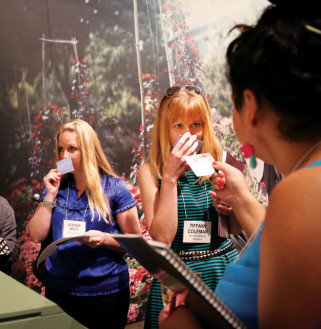
Museum visitors stroll through Monet’s garden—a wall-sized mural—while smelling floral vapors Monet might have experienced in his garden in the museum’s first-ever “scent room.”
In the final gallery, late 1800s painters begin the foray into Modernism. “The Van Gogh still lifes show his experiments with color theory,” Daneo said. “Cézanne’s work becomes an influence for future artists. The Matisse paintings are intimate. Artists paint from their imaginations and dreams, and the illusionism creates a sense of ambiguity, where we lose the sense of plane: what is in the foreground and what is in the background? There is little relation to the botany of the first gallery. The subjectivity from the standpoint of the artists launches art into new horizons.”
Shadia Lemus, communications manager at the Denver Art Museum and a Stapleton resident since 2003, finds gardening inspiration in the exhibition. “We give our outdoor space in Stapleton a lot of love with flowers, trees, climbing vines and all types of greenery. The exhibition has shown me how to add color to my garden, as well as provides so many wonderful examples on how to bring our garden inside with colorful bouquets.”
In addition to the exhibition of paintings, visitors will experience flower-inspired art and activities throughout the museum. The hands-on Flower Studio lets families get creative together. The art-making space helps visitors try out art materials, explore design styles, and experiment with techniques. Local artists are on hand to demonstrate flower-inspired art-making.
Final Friday events will explore the summer flowers theme with programs on botany and perfume making.
In Bloom is free for members. Tickets for nonmembers range from $5 to $15 and children under 5 get in free. For more information, see www.denverartmuseum.org or call 720.865.5000.

Museum-goers can design floral arrangements on interactive screens in a mock artist studio from the late 1800s.




How beautiful is the Assistant Curator, Angelica Daneo, and take my word for this …she is my daughter!!
Andrea Daneo ( proud father )